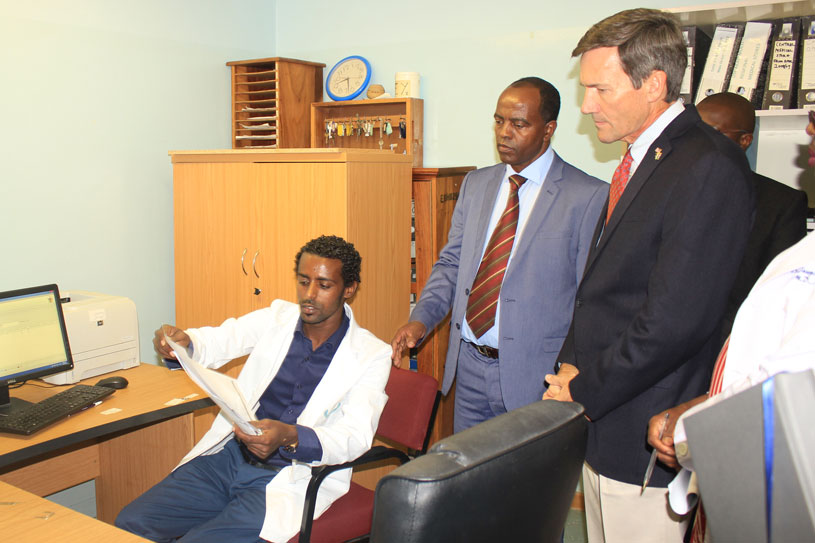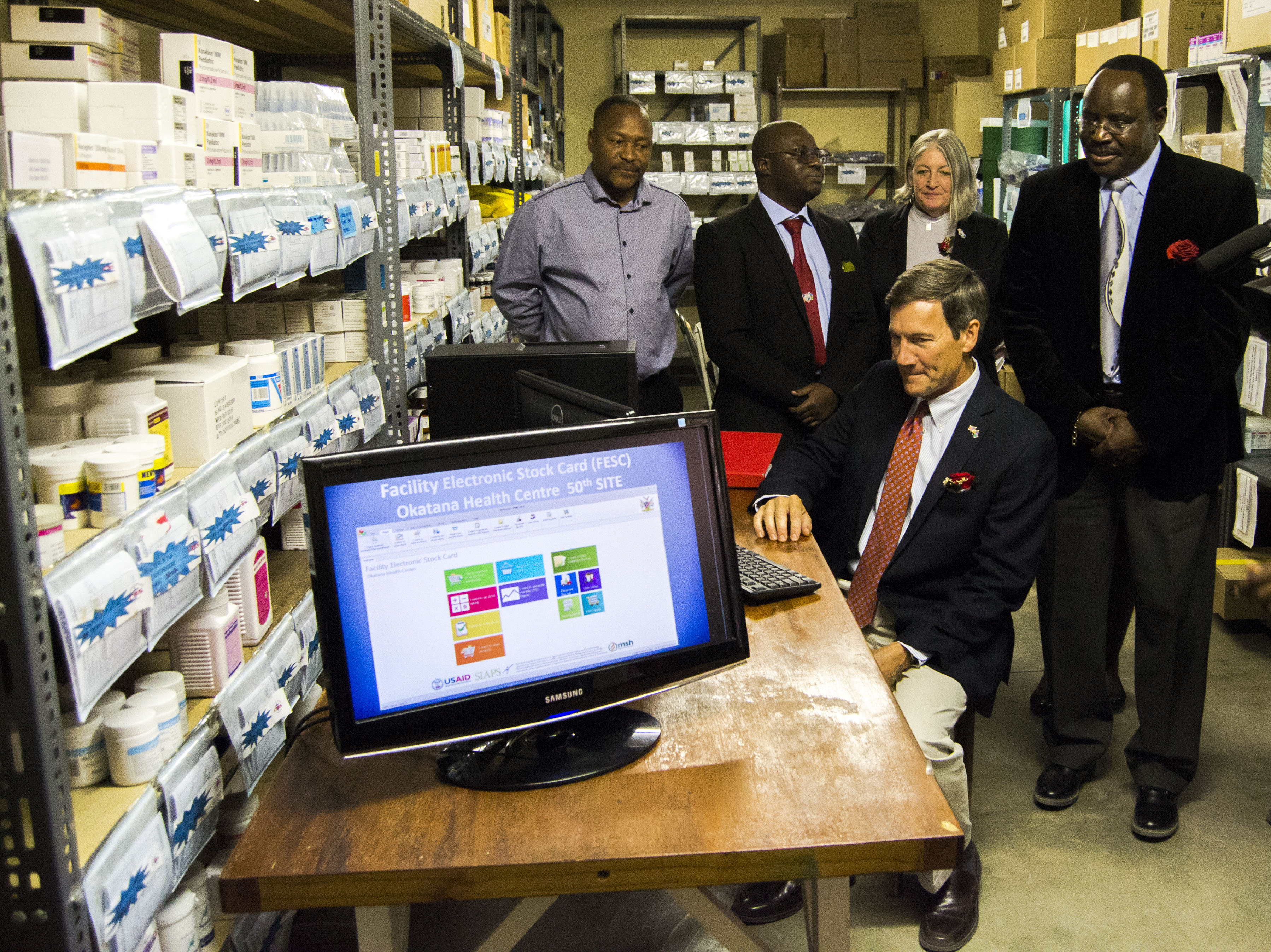The U.S. Ambassador to Namibia, H.E. Thomas Daughton, visited a hospital and clinic in the Oshana region of Namibia last week to unveil a new electronic stock card, an innovation that has greatly improved service delivery in the country.

The Facility Electronic Stock Card (FESC) simplifies pharmaceutical inventory control tasks, allowing pharmacy staff to devote more time to patient care. The Ministry of Health and Social Services adopted the tool with support from SIAPS. It has replaced manual stock cards at 50 public health facilities, including 35 district and referral hospitals, 5 health centers, and 10 clinics.
The e-stock card was installed at the Intermediate Hospital Oshakati in September 2016. Prior to this, the hospital was known for its long waiting times; patients would typically spend almost a whole day waiting at the pharmacy. However, patients and hospital staff say that service speed has dramatically improved since then, reducing their wait times to less than 20 minutes on average.
At the pharmacy at the Oshakati hospital last week, Olavi Shomongula, who came from Ongwediva, roughly six miles away, said, “Around 9:00 [in the morning] you would come from seeing the doctor and wait until 3:00 or 4:00 [in the afternoon] if you were lucky.”
Veronica Shoopati typically left her home at 5:00 a.m. to pick up her mother’s medication.

“You would put your [prescription] card in the box and wait for more than three hours to go to the pharmacy. Then, you would sit and stand for more than seven hours waiting for your name to be called. However, since last year, services have improved. You put your card in the box and immediately, your name is called,” Shoopati said.
Pharmacy staff at the hospital attribute the improved efficiency of their services to the e-stock card, which speeds the ordering, issuing, and receiving of pharmaceutical supplies and tracks the stock status of items. Previously, it was a mammoth manual task, given the hospital’s daily roster of some 3,000 patients. Oshakati serves a catchment population of more than 190,000 people and is a referral hospital for five regions with a combined population of approximately 935,000.
The hospital’s senior pharmacist, Mesele Walellign, said, “With the implementation of FESC, everything is done electronically and medicines are managed with no problems. This is why services have improved compared to other facilities. Ninety percent of our patients are satisfied.”
The tool also helps pharmaceutical managers compile and report essential logistics information for effective forecasting. They can track the availability and use of antiretrovirals and other medicines and supplies at the health facility level.
Ambassador Daughton and the Governor of the Oshana region, Hon. Clemens Kashuupulwa, unveiled the e- stock card at the Okatana health center nearby, the 50th site to be equipped with it. Daughton noted that the tool has improved service delivery by ensuring that patients have access to timely life-saving medicines in the right quantities.
“Today not only marks a milestone in the tool’s wider and increasingly integrated use across the country. It’s also a chance for us to see how the US Government’s support for pharmaceutical management in Namibia is improving the delivery of services to patients in cities, towns, and villages,” he said.
Kashuupulwa thanked USAID for its continued support in improving the quality of life for Namibians and urged all health managers, pharmaceutical staff, and health administrators in the region to use the e-stock card to its full potential.
“This is a real achievement by the Ministry of Health and Social Services in the region, as it has been difficult for health facilities to provide the pharmaceuticals needed by patients,” he said.
The Governor also acknowledged SIAPS’s support in implementing projects that have improved health service delivery, such as e-TB Manager, another electronic tool that he credited with helping to decrease TB mortality rates in the Oshana region. SIAPS has also supported measures to build the capacity of human resources within the pharmaceutical sector, including establishing a pharmacy degree at the University of Namibia’s School of Pharmacy and scaling up the training of pharmacy assistants at the National Health Training Center.

